Giovanni Borea Rest Home and Zeffiro Massa Institute
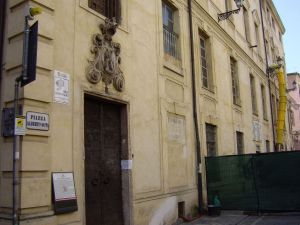 It was the 22nd June 1871 when, in the San Remo Town Hall (the building is the one still owned by the Town Council, today a museum, with entrance from Piazza Nota), the will was read in which the Reverend Canon Lawyer Giovanni Battista Borea had established a Monte di Pietà (Pawnshop) to be administered by the most prominent people in the town, the parish priest of San Siro and the mayor in the lead.
It was the 22nd June 1871 when, in the San Remo Town Hall (the building is the one still owned by the Town Council, today a museum, with entrance from Piazza Nota), the will was read in which the Reverend Canon Lawyer Giovanni Battista Borea had established a Monte di Pietà (Pawnshop) to be administered by the most prominent people in the town, the parish priest of San Siro and the mayor in the lead.
Thus was born the 'seed' of what became, at the turn of the century, a city institution to which the people of Sanremo are particularly attached.
This is the fascinating story of legacies, donations, benefactors and the work of worthy citizens in favour of the poor, the needy, the elderly and orphans.
Ospizio Borea, Fondazione Zeffiro Massa, the work of Petronilla Sappia and the great benefactors Ernesto and Giovanni Marsaglia are some of the names contained in the distant constitution of the Ospizio Borea Massa Marsaglia, which has changed face several times over the long period of time that has seen it play a leading role in the social life of Sanremo.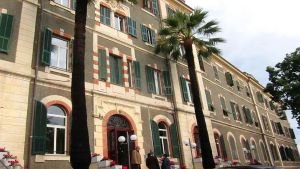 Today the hospice is, as we have seen, organised as a foundation, the Borea e Massa foundation. The transformation was decided in 2003 by the Region, which recognised the legal personality of private law to the assistance and charitable institution «Casa di Riposo Borea e istituto Zeffiro Massa».
Today the hospice is, as we have seen, organised as a foundation, the Borea e Massa foundation. The transformation was decided in 2003 by the Region, which recognised the legal personality of private law to the assistance and charitable institution «Casa di Riposo Borea e istituto Zeffiro Massa».
The foundation's board of directors is appointed by the town council and the mayor.
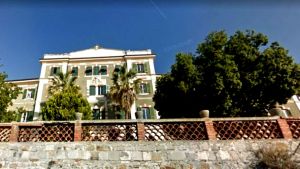 Appointments include the one in 2005 when Patrizia Peotta was appointed to lead the institution, but she resigned in 2008. And in the same year, Rosalba Nasi, who had already been a commissioner of the organisation and had been a point of reference for the Borea for a decade, became president. Her name, supported by several political parties, is linked to the attempt to balance the accounts, the relaunch of the historic organisation and the expansion and renovation work, particularly on the west wing.
Appointments include the one in 2005 when Patrizia Peotta was appointed to lead the institution, but she resigned in 2008. And in the same year, Rosalba Nasi, who had already been a commissioner of the organisation and had been a point of reference for the Borea for a decade, became president. Her name, supported by several political parties, is linked to the attempt to balance the accounts, the relaunch of the historic organisation and the expansion and renovation work, particularly on the west wing.
In 2009, Rosalba Nasi was awarded the prestigious "San Romolo Prize" for social work, precisely for her work on behalf of the rest home, where in the meantime the "La Cicogna" inter-company nursery school and the modern socialisation centre for the disabled entrusted to Anffas have also been built.
In 2012, alerted by some relatives, who realised that something was wrong after noticing some suspicious bruises, the Guardia di Finanza opened an investigation, called 'Acheronte', during which they discovered, through the images of hidden cameras, chilling scenes. For example, an operator passing in the corridor next to an old woman in a wheelchair leaning against the wall, suddenly, without showing any emotion, elbowed her in the face, while continuing to walk.
A story of violence, the footage of which was shown around Italy: very frail grandmothers being thrown forcibly onto their beds, to which they were sometimes tied; elderly men being beaten and insulted; disabled people being treated like animals.
Several employees were indicted, including nurses and health workers, who, after being tried, were condemned, some by abbreviated procedure and others by plea bargaining a three-year sentence.
Three managers of the Institute, including Rosalba Nasi, went directly to trial.
During the trial, which took place in 2017, the prosecutor had stated in his conclusion: « None of the defendants had ever stopped this unlawful behaviour, despite the complaints made by the families of elderly victims of abuse. The defendants omitted any kind of vigilance in the facility, but rather were concerned about the image of the facility. Yet the warning signs were there and had been numerous ».
The trial ended with two acquittals, because the fact does not constitute a crime for the president of the Airone Cooperative of Imperia, Stefano Bisiani, for not having committed the fact an employee of the Borea, Benito Viale and a conviction for Rosalba Nasi to two years' imprisonment with suspended sentence for which a sentence of one year and eight months had been requested, as well as compensation for the civil plaintiff: the Asl, the Borea Foundation and the relatives of the elderly victims of the violence.
In the appeal presented to the Court of Appeal of Genoa, Nasi was acquitted for not having committed the fact, and therefore cleared of all charges, both criminal and civil with a judgment of 29 March 2019 that overturned that of first instance.
The three key figures linked to birth and development.
Giovanni Battista Borea was born in Sanremo in 1793, while the French revolutionary armies were raging. A priest, canon and lawyer, he had inherited houses and land from an uncle with the obligation to use the income to create a dowry for poor girls.
In 1871, he bequeathed his assets to the creation of a Monte di Pietà (pawnshop), an institution that granted non-profit loans against a pledge, which would be auctioned off if the sum was not repaid: in the absence of savings banks or other financial institutions, those who needed money in Sanremo at that time ended up in the clutches of usurers.
Giovanni Borea died a few weeks after having dictated his will: a lemon house, a large building and its furnishings were then - much to the annoyance of his grandchildren - put into a fund for the creation of the Monte and the support of poor girls.
The silverware in the house disappeared and the nephews contested their uncle priest's will. To no avail.
A Royal Decree of 27 July 1873 established the Mount of Piety as a Corps.
But Sanremo was undergoing a rapid transformation.
The construction of the railway and massive investments in the hotel sector transformed a seaside town surrounded by citrus and olive groves into a celebrated "ville de saison", a winter residence for sovereigns, aristocrats and bourgeoisie fleeing the unhealthy climates of their countries of origin.
The population increased, new banks were founded: the Monte di Pietà proved to be an obsolete institution, while the problems of caring for the elderly without means and people unable to work came to the fore.
Not wishing to betray the canon's charitable wishes, in January 1886 the Mount was converted into the "Giovanni Borea Charity Shelter".
Once the situation of those who could no longer work had been at least partially remedied, it remained to take care of those who were still unable to do so.
And in 1888 an orphanage was associated with the Borea Home. « Merciless and heartless is that society - wrote Michele Costantino Astraldi - which is similar to the ocean, which roars furiously, and which, not being able to hold the bodies of the shipwrecked people enveloped by the angry waves, closes by rebooting and flattens itself ».
At a time when there was no public assistance and society truly resembled the indifferent ocean described by the local historian, only private charity could buffer the suffering of the weakest.
Zeffirino Massa - the second of our reference figures - was a simple prefectural clerk. Born in Sanremo in 1832, apparently destined to die in infancy due to his frailty, Zeffirino had lived mainly in Genoa.
During his visits to Sanremo he devoted himself to helping orphans together with another benefactress, Petronilla Sappia. Massa led a more than spartan life, saving on necessities and attracting criticism from those who considered him a hardened miser, an avaricious man incapable of enjoying the pleasures of life. 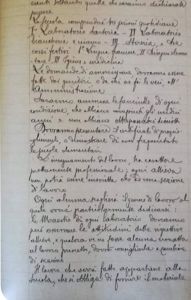 But his extreme thriftiness was not an end in itself: when he died in May 1892, it was discovered that he had accumulated a considerable patrimony and had destined it for the creation of an asylum for male and female orphans, or for children of parents who could not support their children.
But his extreme thriftiness was not an end in itself: when he died in May 1892, it was discovered that he had accumulated a considerable patrimony and had destined it for the creation of an asylum for male and female orphans, or for children of parents who could not support their children.
The new Opera Pia, administered like the Borea by the city's Congregation of Charity, was officially founded in 1893. Four years later, the founder's remains were moved from Genoa and buried in San Remo, to the delight of the people. Despite the bequests of other benefactors, the Asilo Massa and the Ospizio Borea showed their inadequacy in the face of the increasing number of requests for help.
At this point the third key figure in the story came into play:
Giovanni Marsaglia. With him we made our way into the elite of national industry and finance. Born in 1845, an engineer from Turin, he had arrived in Sanremo in 1871 to supervise work on the new railway line.
The story of his successes thus began with that of the Borea bequest, especially since it was he who had bought the lemon garden in the Pian di Nave region, which had been liquidated to meet the needs of the institute. 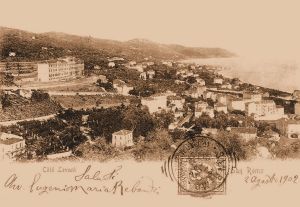 Giovanni Marsaglia was a real tycoon, like those who flourished in America by laying sleepers connecting the two oceans. In the mid-1990s, he bought a large plot of land in the Francia region and had a building constructed at his own expense to accommodate the elderly, the disabled and orphans. According to his contemporaries, Marsaglia imposed silence on the identity of the benefactor; his gesture was to remain anonymous.
Giovanni Marsaglia was a real tycoon, like those who flourished in America by laying sleepers connecting the two oceans. In the mid-1990s, he bought a large plot of land in the Francia region and had a building constructed at his own expense to accommodate the elderly, the disabled and orphans. According to his contemporaries, Marsaglia imposed silence on the identity of the benefactor; his gesture was to remain anonymous.
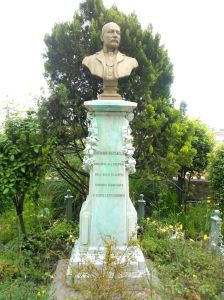 His gesture was to remain anonymous, a secret that was broken no later than 5 November 1900, when a long illness finally killed him at the age of 56. An imposing funeral in the pouring rain and whistling wind, almost as if to inspire the words of the historian Astraldi.
His gesture was to remain anonymous, a secret that was broken no later than 5 November 1900, when a long illness finally killed him at the age of 56. An imposing funeral in the pouring rain and whistling wind, almost as if to inspire the words of the historian Astraldi.
Even the socialists of San Remo, with whom the engineer had had strong frictions and who wanted to replace private charity with « law and social assistance », paid tribute to his personal merits.
A year later, a bust of the benefactor was uncovered at the top of a column in front of the façade of his creation, from then on called the Giovanni Marsaglia Charity Home.
The life of the orphanage and the hospice, now stable and somehow harmonised, continued to follow the events of San Remo and the town.
The children of Massa formed an orchestra called the Banda dei Poveri Vecchi, which took part in the town's events. 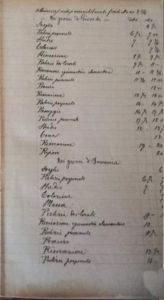 The life of the inmates of the Borea, among the Sisters of Charity, was marked by military schedules and studded with stories of various humanity.
The life of the inmates of the Borea, among the Sisters of Charity, was marked by military schedules and studded with stories of various humanity.
The Congregation in charge of the Opere Pie was administered by men who, for better or worse - taking into account the resources but also the problems of a city whose centre was a gambling establishment - made the history of Sanremo and contributed to making Italian history.  The names that stand out are those of Orazio Raimondo, a lawyer for major criminal cases, socialist deputy, and the grey eminence of democratic interventionism during the First World War; his brother Riccardo, who at the beginning of the Fascist period favoured the expatriation of many opponents of the regime across the French border; and Ferdinando Bosso, who in France was treasurer of the anti-Fascist Italian League for Human Rights; Quirino Calvino, Italo's uncle, who appears in many of the writer's works, where his character blends with that of his agronomist father; podestà Pietro Agosti, engineer-architect not only of important city works such as the Russian Church, but also of the legalisation of the casino in 1927, a hotbed of intrigue that cost him his life; his deputy Ernesto Parodi, who took refuge in the family's Equador estate on Agosti's death and returned a few years later to take up a seat in Parliament. Then there was cavalier Antonio Rubino, senator Ernesto Marsaglia and others...
The names that stand out are those of Orazio Raimondo, a lawyer for major criminal cases, socialist deputy, and the grey eminence of democratic interventionism during the First World War; his brother Riccardo, who at the beginning of the Fascist period favoured the expatriation of many opponents of the regime across the French border; and Ferdinando Bosso, who in France was treasurer of the anti-Fascist Italian League for Human Rights; Quirino Calvino, Italo's uncle, who appears in many of the writer's works, where his character blends with that of his agronomist father; podestà Pietro Agosti, engineer-architect not only of important city works such as the Russian Church, but also of the legalisation of the casino in 1927, a hotbed of intrigue that cost him his life; his deputy Ernesto Parodi, who took refuge in the family's Equador estate on Agosti's death and returned a few years later to take up a seat in Parliament. Then there was cavalier Antonio Rubino, senator Ernesto Marsaglia and others...
The Marsaglia fortune declined rapidly with the crisis of 1929 and suffered the decisive collapse in 1934, with the death of Giovanni's last brother, Luigi.
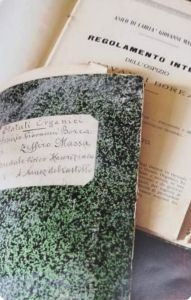 I
I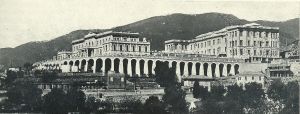 n 1938, the administration of the Borea and Massa was merged with that of the Vittorio Emanuele III Civic Hospital and the Nuñez del Castillo Children's Hospital.
n 1938, the administration of the Borea and Massa was merged with that of the Vittorio Emanuele III Civic Hospital and the Nuñez del Castillo Children's Hospital. 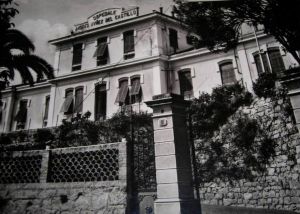
The naval bombardments of the war, which in San Remo caused serious damage to the central area of the city, spared the hospital building.
The aggregation with the hospitals was dissolved in 1965 to give rise to the «Giovanni Borea Rest Home and Zeffiro Massa Institute».
Society was again changing rapidly and the management of Massa, faced with the growing demand for the elderly, was now moving to limit the reception of minors and merge with the Borea institute.
(source: elaboration based on the text by the writer Riccardo Mandelli; court documents taken from chronicles of the time; images from private archives and WEB)




